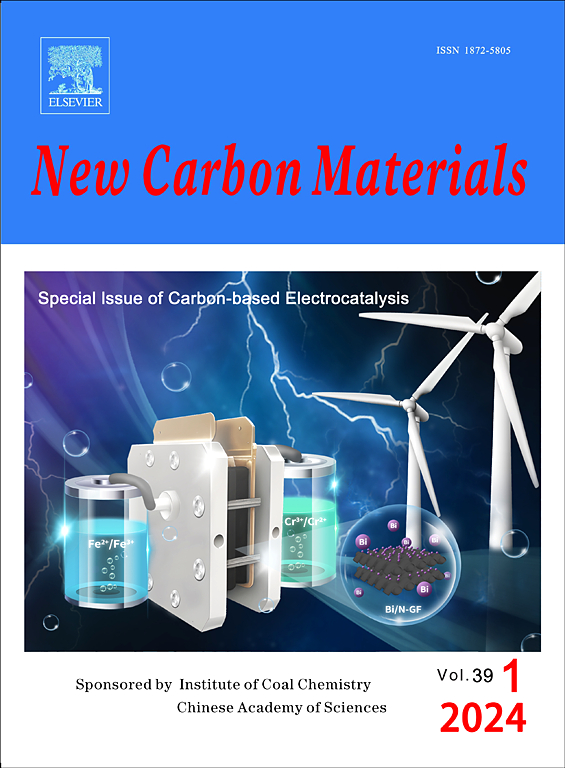Porous nitrogen-doped carbon nanosheets derived from oil palm petioles for use as the sulfur host material in high-rate and durable Li-S batteries
IF 5.7
3区 材料科学
Q2 Materials Science
引用次数: 0
Abstract
The composition and structure of the sulfur host material in lithium-sulfur batteries are the main reasons for differences in battery performance, and one that is both economical and environmentally friendly is needed for producing practical batteries. We have used an innovative method to prepare nitrogen-doped porous carbon nanosheets (N-PPCNs) from the petioles of palm trees. A nitrogen dopped material consisting of stacks of these nano-sheets was synthesized by soaking the petioles in urea followed by chemical activation. The porous carbon materials were uniformly doped with nitrogen and were used as the sulfur host material, which increased the adsorption energy of polysulfides and accelerated the conversion from long-chain polysulfides to short-chain polysulfides. The porous structure and nitrogen doping work together to suppress the “shuttle effect”, enabling the electrode to achieve a high specific capacity of 1257 mAh g−1, and still maintain a specific capacity of 490 mAh g−1 after 500 cycles at a rate of 1 C. This work demonstrates the potential reuse of waste biomass.
从油棕叶柄中提取的多孔氮掺杂碳纳米片用于高速率和耐用锂电池的硫宿主材料
锂硫电池中硫主体材料的组成和结构是造成电池性能差异的主要原因,生产实用电池需要一种既经济又环保的主体材料。我们采用了一种创新的方法,从棕榈树的叶柄制备了氮掺杂的多孔碳纳米片(N-PPCNs)。通过将叶柄浸泡在尿素中并进行化学活化,合成了一种由这些纳米片堆叠而成的氮掺杂材料。采用均匀掺杂氮的多孔碳材料作为硫宿主材料,提高了多硫化物的吸附能,加速了长链多硫化物向短链多硫化物的转化。多孔结构和氮掺杂共同抑制了“穿梭效应”,使电极达到1257 mAh g−1的高比容量,并且在以1 c的速率循环500次后仍保持490 mAh g−1的比容量。
本文章由计算机程序翻译,如有差异,请以英文原文为准。
求助全文
约1分钟内获得全文
求助全文
来源期刊

New Carbon Materials
MATERIALS SCIENCE, MULTIDISCIPLINARY-
CiteScore
6.10
自引率
8.80%
发文量
3245
审稿时长
5.5 months
期刊介绍:
New Carbon Materials is a scholarly journal that publishes original research papers focusing on the physics, chemistry, and technology of organic substances that serve as precursors for creating carbonaceous solids with aromatic or tetrahedral bonding. The scope of materials covered by the journal extends from diamond and graphite to a variety of forms including chars, semicokes, mesophase substances, carbons, carbon fibers, carbynes, fullerenes, and carbon nanotubes. The journal's objective is to showcase the latest research findings and advancements in the areas of formation, structure, properties, behaviors, and technological applications of carbon materials. Additionally, the journal includes papers on the secondary production of new carbon and composite materials, such as carbon-carbon composites, derived from the aforementioned carbons. Research papers on organic substances will be considered for publication only if they have a direct relevance to the resulting carbon materials.
 求助内容:
求助内容: 应助结果提醒方式:
应助结果提醒方式:


